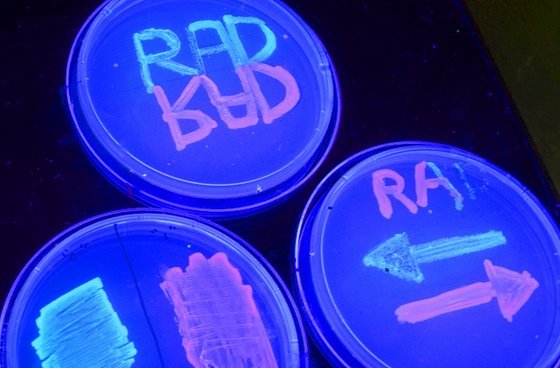
US researchers from Stanford University have demonstrated a means to use short sections of DNA as rewritable data “bits” in living cells.
The technique uses two proteins adapted from viruses to “flip” the DNA bits.
Though it is at an early stage, the advance could help pave the way for computing and memory storage within biological systems.
The team reporting in Proceedings of the National Academy of Sciences says the tiny information storehouses may also be used to study cancer and aging.
The team, from Stanford University’s bioengineering department, has been trying for three years to fine-tune the biological recipe they use to change the bits’ value.

The bits comprise short sections of DNA that can, under the influence of two different proteins, be made to point in one of two directions within the chromosomes of the bacterium E. coli.
The data are then “read out” as the sections were designed to glow green or red when under illumination, depending on their orientation.
The two proteins, integrase and excisionase, were taken from a bacteriophage – a virus that infects bacteria. They are involved in the DNA modification process by which the DNA from a virus is incorporated into that of its host.
The trick was striking a balance between the two counteracting proteins in order to reliably switch the direction of the DNA section that acted as a bit.
After some 750 trials, the team struck on the right recipe of proteins, and now have their sights set on creating a full “byte” – eight bits – of DNA information that can be similarly manipulated.
The work is at the frontier of biological engineering, and senior author of the research Drew Endy said that applications of the approach are yet to come.
“I’m not even really concerned with the ways genetic data storage might be useful down the road, only in creating scalable and reliable biological bits as soon as possible,” Dr. Drew Endy said.
“Then we’ll put them in the hands of other scientists to show the world how they might be used.”
As the DNA sections maintained their logical value even as the bacteria doubled 90 times, one clear application would be in using the DNA bits as “reporter” bits on the proliferation of cells, for example in cancerous tissue.
But longer-term integrations of these computational components to achieve computing within biological systems are also on the researchers’ minds.
“One of the coolest places for computing is within biological systems,” Dr. Drew Endy said.